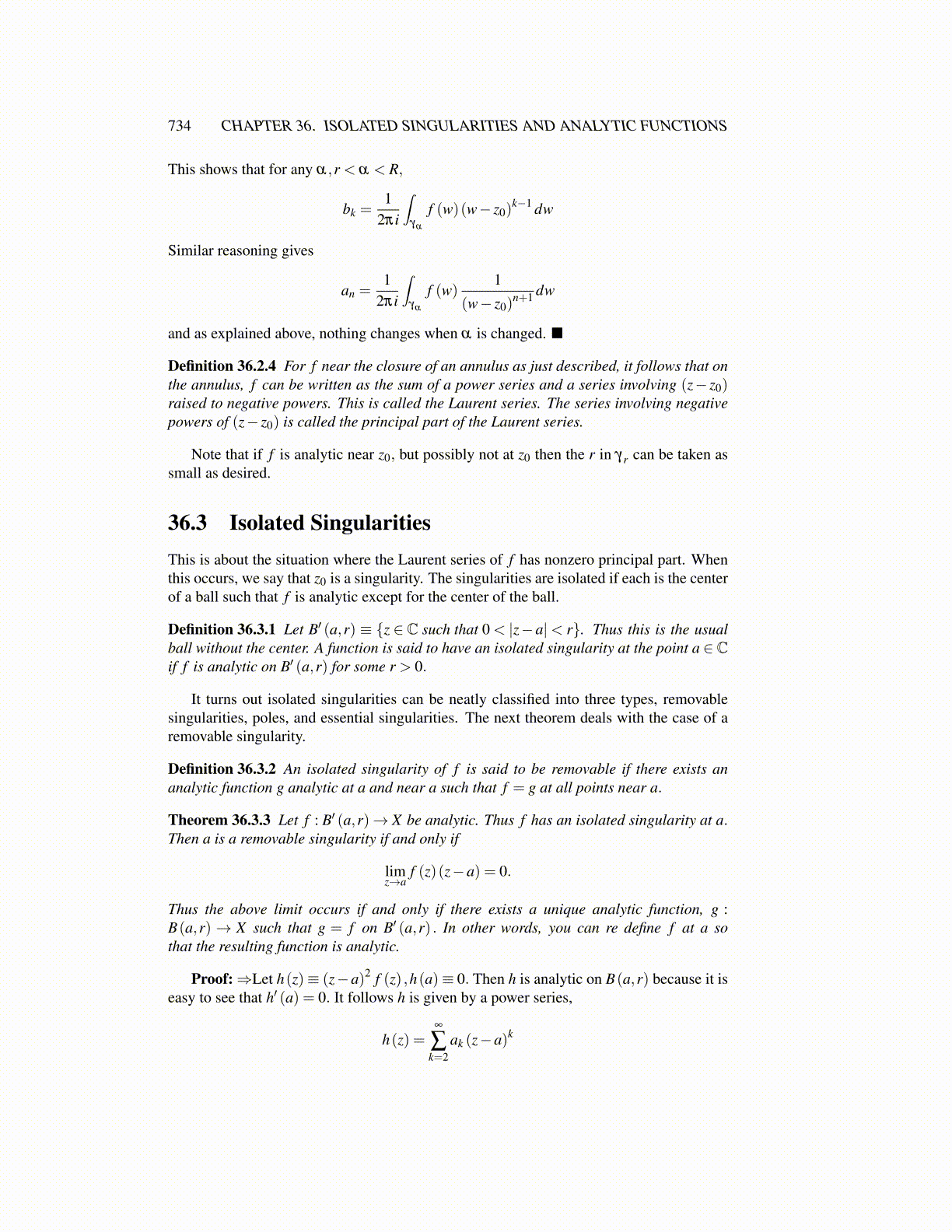
734 CHAPTER 36. ISOLATED SINGULARITIES AND ANALYTIC FUNCTIONS
This shows that for any α,r < α < R,
bk =1
2πi
∫γα
f (w)(w− z0)k−1 dw
Similar reasoning gives
an =1
2πi
∫γα
f (w)1
(w− z0)n+1 dw
and as explained above, nothing changes when α is changed. ■
Definition 36.2.4 For f near the closure of an annulus as just described, it follows that onthe annulus, f can be written as the sum of a power series and a series involving (z− z0)raised to negative powers. This is called the Laurent series. The series involving negativepowers of (z− z0) is called the principal part of the Laurent series.
Note that if f is analytic near z0, but possibly not at z0 then the r in γr can be taken assmall as desired.
36.3 Isolated SingularitiesThis is about the situation where the Laurent series of f has nonzero principal part. Whenthis occurs, we say that z0 is a singularity. The singularities are isolated if each is the centerof a ball such that f is analytic except for the center of the ball.
Definition 36.3.1 Let B′ (a,r) ≡ {z ∈ C such that 0 < |z−a|< r}. Thus this is the usualball without the center. A function is said to have an isolated singularity at the point a ∈Cif f is analytic on B′ (a,r) for some r > 0.
It turns out isolated singularities can be neatly classified into three types, removablesingularities, poles, and essential singularities. The next theorem deals with the case of aremovable singularity.
Definition 36.3.2 An isolated singularity of f is said to be removable if there exists ananalytic function g analytic at a and near a such that f = g at all points near a.
Theorem 36.3.3 Let f : B′ (a,r)→ X be analytic. Thus f has an isolated singularity at a.Then a is a removable singularity if and only if
limz→a
f (z)(z−a) = 0.
Thus the above limit occurs if and only if there exists a unique analytic function, g :B(a,r) → X such that g = f on B′ (a,r) . In other words, you can re define f at a sothat the resulting function is analytic.
Proof:⇒Let h(z)≡ (z−a)2 f (z) ,h(a)≡ 0. Then h is analytic on B(a,r) because it iseasy to see that h′ (a) = 0. It follows h is given by a power series,
h(z) =∞
∑k=2
ak (z−a)k